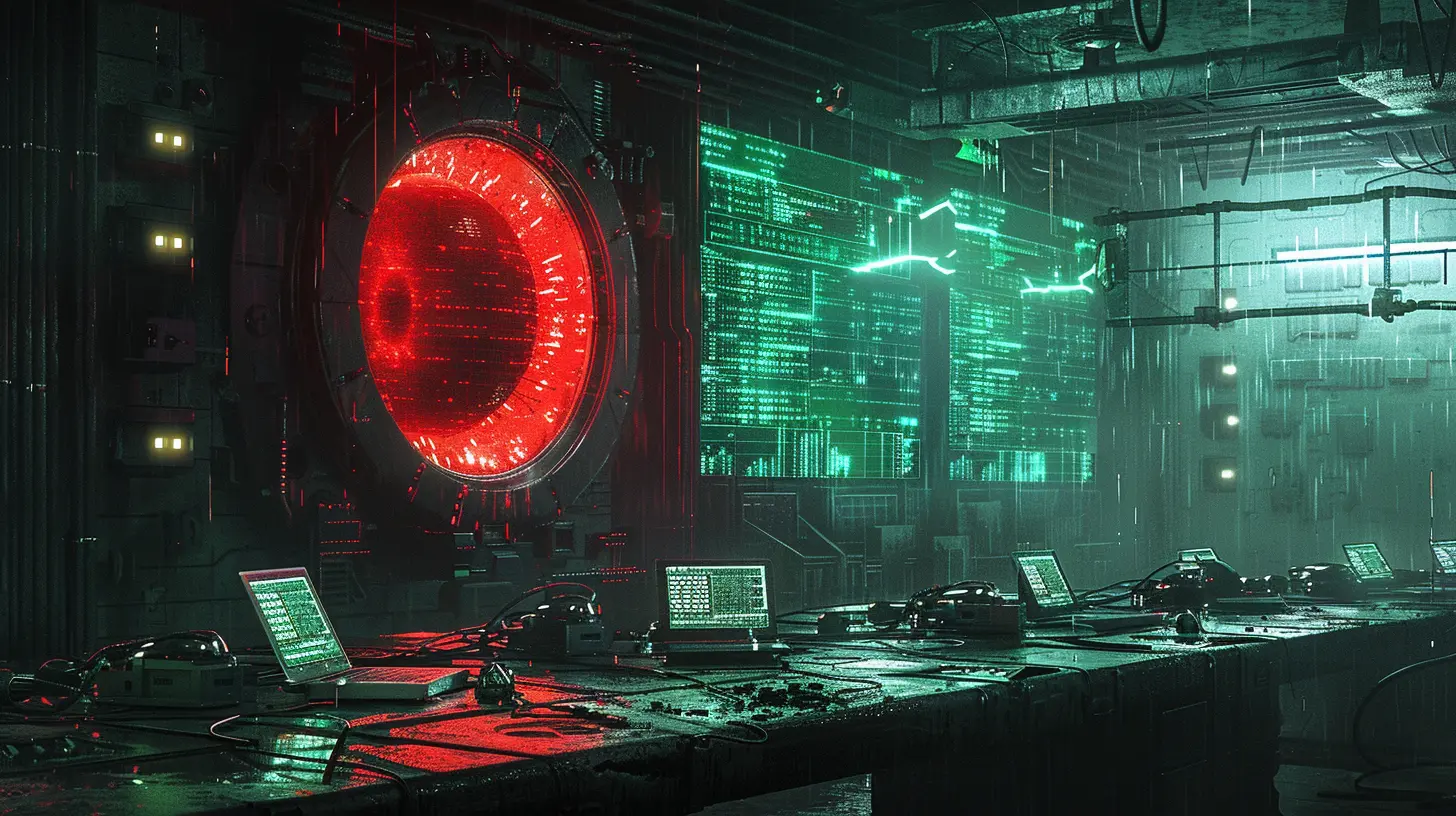Wind Power for Homes: How to Set Up Your Own Turbine
11 October 2025
Have you ever thought about harnessing wind power right in your backyard? Well, you're not alone. As electricity bills continue to climb and environmental issues take center stage, more and more homeowners are exploring renewable energy options. Solar panels are already popular, but wind turbines for homes are becoming the next big thing. Not only are they eco-friendly, but they can also save you money in the long run. Plus, setting up a wind turbine isn't as complicated as you might think.
In this article, I'll walk you through everything you need to know about setting up your own wind turbine at home. From understanding how wind power works, to the gear you’ll need, and even some unexpected challenges—this guide has it all. So, let’s dive into the world of DIY wind power!

Why Wind Power for Homes?
Before we get into the nitty-gritty of how to set up your own turbine, let’s talk about why you might want to consider wind energy for your home. Why wind power?Environmental Benefits
First off, wind power is a clean, renewable energy source. Unlike fossil fuels, it doesn’t emit harmful greenhouse gases or other pollutants. By using wind energy, you’re actively contributing to a greener, more sustainable future. Think of it as your own little contribution to combating climate change.Cost Savings
Sure, the initial investment in a wind turbine can be quite hefty, but over time, it can save you a significant amount on electricity bills. Depending on the size of your system and the wind conditions in your area, you could potentially generate enough power to meet most, if not all, of your household's energy needs. Imagine watching your electricity meter run backward—pretty cool, right?Energy Independence
One of the most appealing aspects of wind power is the idea of energy independence. By generating your own electricity, you're less reliant on the grid and the ever-changing prices of traditional utilities. In some cases, you might even be able to sell excess electricity back to the grid, turning your home into a mini power station.
How Does Wind Power Work?
Okay, so how does wind power actually work? It’s pretty simple when you break it down. Wind turbines convert the kinetic energy in wind into electrical energy. When the wind blows, it turns the blades of the turbine, which are connected to a rotor. The rotor spins a generator, and voilà—you’ve got electricity.Types of Wind Turbines
There are two main types of wind turbines you can consider for your home:1. Horizontal Axis Wind Turbines (HAWT): These are the most common types and are what most people picture when they think of wind turbines. They have a propeller-like design and must face into the wind to work efficiently.
2. Vertical Axis Wind Turbines (VAWT): These are less common but can be a good option for certain homes. They don’t have to face into the wind, which can make them easier to install in areas with variable wind directions.
Both have their pros and cons, but for most homeowners, a horizontal axis turbine will be the way to go.

Is Your Home Suitable for Wind Power?
Before you get too far ahead of yourself, you need to assess whether your home is a good fit for wind power. Not every location is ideal for a wind turbine, and it’s important to know what you’re working with before making any investments.Wind Speed
The most critical factor in determining whether wind energy will work for your home is wind speed. Generally, you’ll need an average wind speed of at least 9-12 mph to make a wind turbine viable. You can check wind maps or use an anemometer to measure wind speeds at your location.Keep in mind that wind speeds can vary depending on the time of year and local geography. If your home is in a valley or surrounded by tall buildings or trees, you may not get enough wind to make a turbine worthwhile.
Zoning and Permits
Unfortunately, not every neighborhood is wind turbine-friendly. Many areas have zoning laws and restrictions on the height and type of wind turbines you can install. Before you get too excited, check with your local government to see what’s allowed in your area. You don’t want to spend thousands on a turbine only to find out you can’t install it legally.Space Considerations
Wind turbines need open space to function properly. If your home is on a small lot or surrounded by tall structures, then a turbine may not be able to generate enough energy. Ideally, your turbine should be mounted at least 30 feet above any nearby obstructions and be placed far enough away from your house to avoid noise or vibration issues.
Choosing the Right Wind Turbine
Now that you’ve determined your home is suitable for wind power, it’s time to choose the right turbine. There are a few key factors to consider when making your selection.Power Output
Wind turbines come in a variety of sizes, and the amount of power they generate depends largely on the size of the turbine and the average wind speeds in your area. Small residential turbines typically generate between 400 watts and 20 kilowatts. To determine how much power you’ll need, take a look at your electricity bills to see how much energy your household uses on average. You may not be able to generate all of your electricity needs, but even a smaller turbine can significantly cut down on your utility costs.Price
The cost of wind turbines can vary widely depending on the size and type. A small turbine that generates around 1 kilowatt of power might cost between $3,000 and $5,000, while larger turbines that generate up to 10 kilowatts can cost upwards of $30,000. Keep in mind that these prices don’t include installation, which can add several thousand dollars to the total cost.Brand and Warranty
Like any major purchase, it’s important to choose a reputable brand with a solid warranty. Wind turbines are a long-term investment, and you’ll want to make sure you’re covered if something goes wrong. Look for brands that offer at least a five-year warranty and have good customer reviews.Installation Process: Step by Step
Once you’ve chosen your turbine, it’s time to get it installed. While some people choose to go the DIY route, it’s generally recommended to hire a professional for the installation. After all, you don’t want your turbine to come crashing down in the next big storm!Step 1: Site Assessment
The first step in the installation process is to assess your site in more detail. A professional installer will evaluate your property to determine the best location for the turbine. They’ll take into account wind patterns, potential obstructions, and local zoning laws.Step 2: Foundation and Tower Installation
Once the site has been chosen, the next step is to install the foundation and tower. The foundation is typically made of concrete and must be strong enough to support the weight of the turbine, especially during high winds. The tower can be a free-standing structure or mounted on your roof, depending on the type of turbine you choose.Step 3: Wiring and Electrical Setup
After the tower is in place, the next step is to connect the turbine to your home’s electrical system. This involves running wiring from the turbine to an inverter, which converts the turbine’s DC power into AC power that can be used by your home. In some cases, you may also need to install a battery storage system to store excess energy.Step 4: Inspection and Testing
Once everything is installed, the final step is to have the system inspected and tested. This ensures that the turbine is operating safely and efficiently. Once the inspections are complete, you’re ready to start generating your own wind power!
Maintenance and Upkeep
Like any piece of machinery, wind turbines require regular maintenance to keep them running smoothly. The good news is that most residential turbines are designed to be low-maintenance, but there are still a few things you’ll need to keep an eye on.Regular Inspections
Most manufacturers recommend having your turbine inspected every 6 to 12 months. During these inspections, a technician will check for any wear and tear on the blades, tower, and electrical components. Catching small issues early can prevent larger, more expensive problems down the road.Cleaning
Dust, dirt, and debris can accumulate on the blades over time, reducing their efficiency. Periodically cleaning the blades can help ensure that your turbine is operating at peak performance. Just make sure to follow the manufacturer’s guidelines for safe cleaning.Lubrication
Some turbines have moving parts that require lubrication to reduce friction and prevent wear. Your installer or manufacturer should provide you with a maintenance schedule for lubrication, so be sure to follow it carefully.Challenges and Considerations
While wind power has many benefits, it’s not without its challenges. Here are a few things to keep in mind before committing to a wind turbine.Noise
Wind turbines do produce some noise, especially during high winds. While most modern turbines are designed to be as quiet as possible, they can still be a nuisance if installed too close to your home. Make sure you’re aware of the noise levels before installation.Wildlife Impact
Wind turbines can pose a threat to birds and bats, especially if they’re placed in areas with a lot of wildlife activity. If you live in an area with a large bird population, you may want to consider alternative energy options.Initial Cost
While wind power can save you money in the long run, the initial cost can be a barrier for some homeowners. Be sure to factor in the cost of installation, permits, and maintenance when calculating your potential savings.
Is Wind Power Right for You?
So, is wind power a good fit for your home? If you live in an area with consistent wind, have plenty of space, and are willing to make the initial investment, then the answer is probably yes. Wind power offers a unique opportunity to reduce your carbon footprint while also saving money on electricity bills. Plus, there’s something pretty cool about generating your own electricity, right?However, if your area doesn’t have consistent wind or you’re restricted by local zoning laws, you may want to explore other renewable energy options, like solar panels.
Conclusion
Wind power is a fantastic renewable energy option for homeowners who meet the right conditions. Setting up your own wind turbine might take some planning and investment, but it can pay off in the long run with energy savings, environmental benefits, and even a sense of independence from the grid. If you’re ready to take the leap into clean energy, a wind turbine could be the perfect solution for your home.all images in this post were generated using AI tools
Category:
Renewable EnergyAuthor:

Michael Robinson
Discussion
rate this article
1 comments
Natalie Bennett
Great insights! Wind turbines can be a sustainable energy source for homes. Excited to learn about the setup process!
October 14, 2025 at 4:11 AM

Michael Robinson
Thank you! I'm glad you found the insights helpful. Stay tuned for the setup details!


